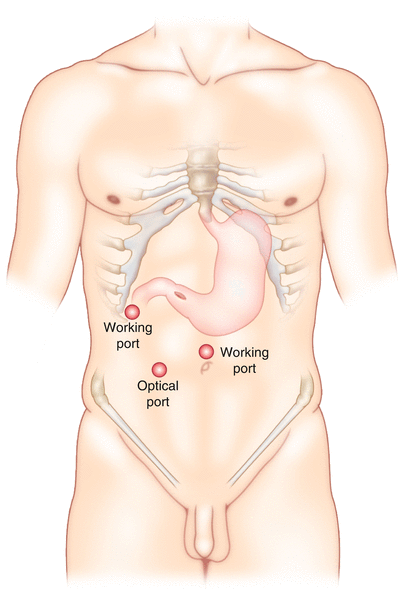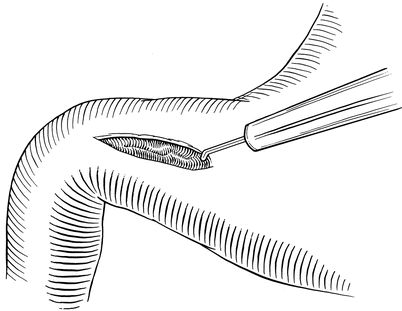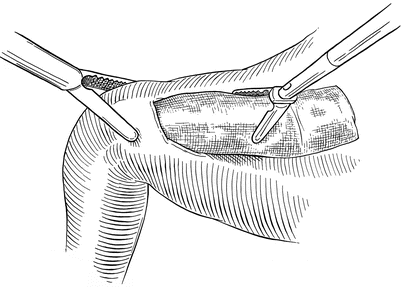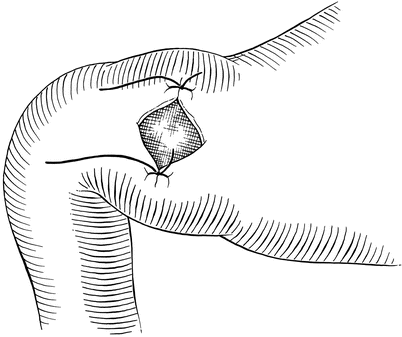Fig. 7.1
Operative ports in order of placement for a laparoscopic Nissen fundoplication

Fig. 7.2
Port placement and rearrangement for a pyloroplasty
7.2.4 Pyloroplasty Procedure
Once the pylorus is identified, electrocautery is employed to score the anterior surface of the pylorus and the first portion of the duodenum (Fig. 7.3). The pylorus is then entered and a 5-cm longitudinal enterotomy is carried distally in the duodenum and proximally in the antrum with the hook cautery or Ligasure™ (Fig. 7.3). Anchoring sutures are placed at the top and bottom of the enterotomy with interrupted 2-0 silk stitches with a V-20 needle and intracorporeally. To prevent incorporation of the posterior wall of the pylorus during closure, a rolled piece of Gelfoam (created by placing 2-0 silk ties at both ends) is introduced into the lumen of the pylorus (Fig. 7.4) and left in place to later dissolve. The longitudinal enterotomy is then closed transversely in a single layer over the Gelfoam roll with interrupted 2-0 silk sutures, which are placed a few millimeters apart, starting from the ends and progressing towards the middle (Fig. 7.5). These sutures are tied intracorporeally (Fig. 7.6). A Maryland dissector is then used to assess for gaps between the sutures, and simple 2-0 silk stitches are placed where appropriate. Finally, two metallic clips are placed on the top and the bottom of the pyloroplasty to help in locating the pyloroplasty on a subsequent barium swallow.




Fig. 7.3
The pylorus is entered and a 5-cm longitudinal enterotomy is carried distally in the duodenum and proximally in the antrum

Fig. 7.4
A rolled piece of Gelfoam is introduced into the lumen of the pylorus to prevent incorporation of the posterior wall of the pylorus during closure

Fig. 7.5




The enterotomy is closed transversely with interrupted 2-0 silk sutures, starting from the ends and progressing towards the middle
Stay updated, free articles. Join our Telegram channel

Full access? Get Clinical Tree








